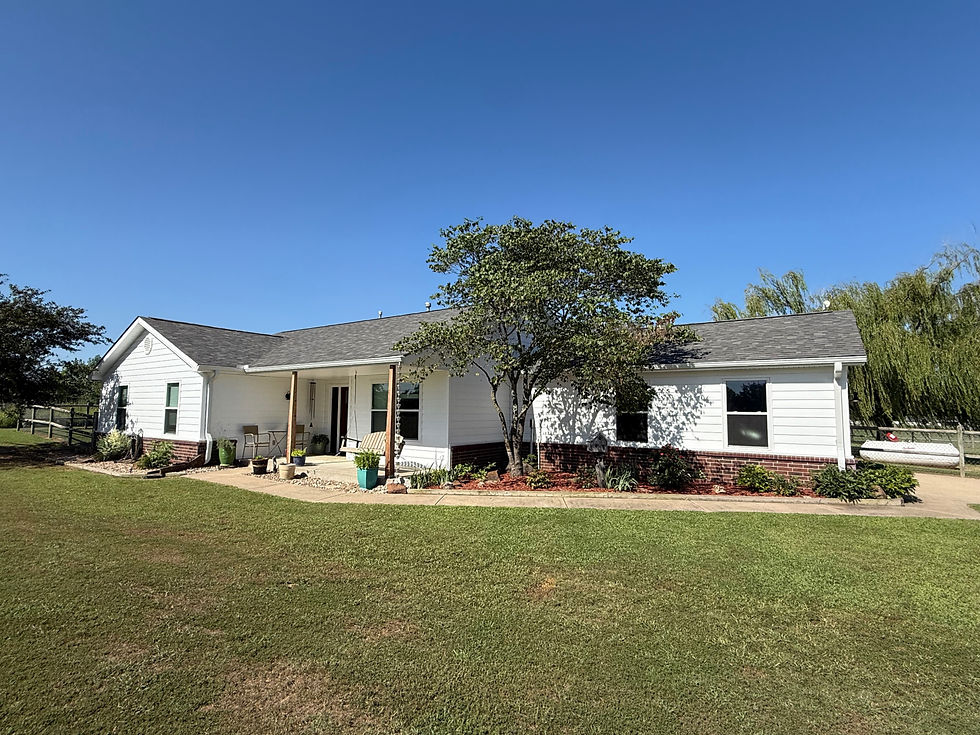Top Benefits of Updating Your Home's Siding
- A&R Exteriors
- Aug 5
- 3 min read
Updating your home's siding is one of the smartest investments you can make. It not only enhances the appearance of your house but also provides numerous practical benefits. Whether your siding is old, damaged, or simply outdated, replacing it can improve your home's value, energy efficiency, and protection against the elements. In this article, we will explore the top benefits of updating your home siding and why it might be time to consider a fresh look for your exterior.
Enhancing Your Home Siding’s Curb Appeal
One of the most immediate and noticeable benefits of updating your home's siding is the boost in curb appeal. The exterior of your home is the first thing visitors and potential buyers see. Fresh, modern siding can transform the look of your house, making it more attractive and inviting.
Variety of styles and colors: New siding materials come in a wide range of colors, textures, and styles. You can choose from traditional wood looks, sleek modern finishes, or even stone and brick veneers.
Increased home value: A well-maintained exterior can increase your home's market value. Updated siding signals to buyers that the home has been cared for.
Personalized design: You can customize your siding to match your personal taste and the architectural style of your home.
For example, vinyl siding is a popular choice because it offers a clean, polished look with minimal maintenance. It can mimic the appearance of wood without the associated upkeep.

Improving Energy Efficiency with New Home Siding
Older siding materials often lack proper insulation, which can lead to higher energy bills. Updating your siding can significantly improve your home's energy efficiency by providing better insulation and reducing drafts.
Better insulation materials: Modern siding options often include insulated panels that help keep your home warmer in the winter and cooler in the summer.
Reduced air leaks: New siding is installed with tight seams and proper sealing, preventing air leaks that waste energy.
Lower utility bills: Improved insulation means your heating and cooling systems don’t have to work as hard, saving you money on energy costs.
For homeowners looking to upgrade, vinyl siding installation is a cost-effective way to improve insulation while also enhancing the exterior look.

What is the Average Labor Cost to Install Vinyl Siding?
Understanding the labor cost involved in updating your siding is important for budgeting your project. Labor costs can vary depending on the size of your home, the complexity of the installation, and your location.
Typical labor rates: On average, labor costs for vinyl siding installation range from $1.50 to $3.00 per square foot.
Factors affecting cost: Removing old siding, repairing underlying damage, and working on multi-story homes can increase labor expenses.
Professional installation benefits: Hiring experienced professionals ensures the siding is installed correctly, preventing future issues like water damage or poor insulation.
Knowing these costs upfront helps you plan your siding update without surprises.

Protecting Your Home from Weather and Damage
One of the most critical reasons to update your home siding is to protect your home from weather-related damage. Old or damaged siding can allow moisture, pests, and wind to penetrate your home’s structure.
Water resistance: New siding materials are designed to repel water and prevent leaks that can cause mold and rot.
Durability: Modern siding options are more resistant to impacts, fading, and cracking.
Pest prevention: Properly installed siding helps keep insects and rodents from entering your home.
For example, vinyl siding is known for its durability and resistance to moisture, making it an excellent choice for homes in areas with heavy rain or humidity.
Low Maintenance and Long-Term Savings
Updating your siding can also reduce the time and money you spend on maintenance. Older siding materials like wood require regular painting, staining, and repairs.
Easy to clean: New siding materials like vinyl and fiber cement can be cleaned with just a hose and mild detergent.
No painting required: Many modern sidings come pre-finished and do not need repainting.
Long lifespan: Quality siding can last 20-50 years, reducing the need for frequent replacements.
By choosing low-maintenance siding, you save both time and money over the long term.
Final Thoughts on Updating Your Home Siding
Updating your home siding is a valuable home improvement project that offers many benefits. From enhancing curb appeal and increasing energy efficiency to protecting your home and reducing maintenance, new siding is a smart investment. Whether you choose vinyl, fiber cement, or another material, professional installation is key to maximizing these benefits.
If you are considering a siding upgrade, explore options like vinyl siding installation to find the best fit for your home’s style and needs. A fresh exterior can make your home more beautiful, comfortable, and durable for years to come.



Comments